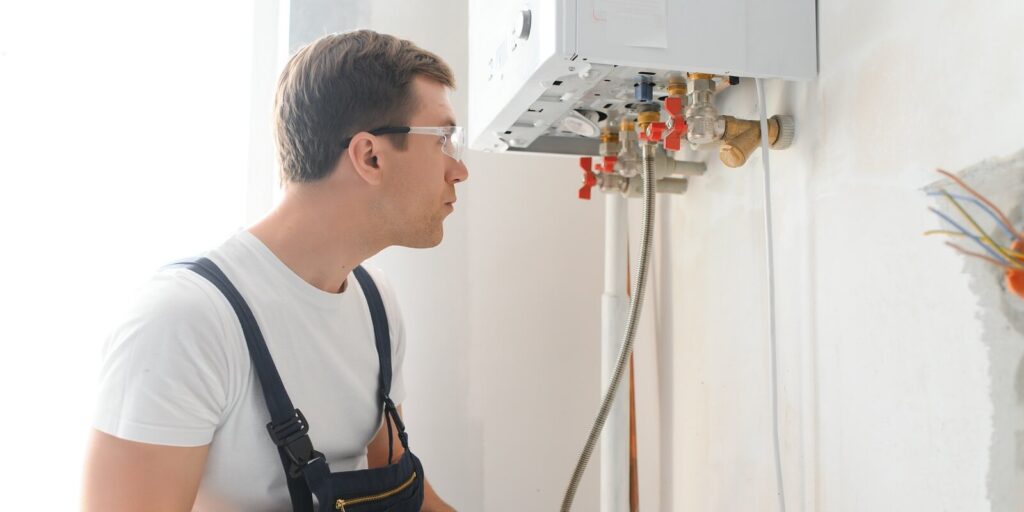
Flushing your water heater might not be the first thing that comes to mind when you think of household maintenance chores, but it deserves a spot on your list of things you do at least once per year.
Flushing your water heater regularly is essential for keeping it running efficiently and lasting for many years, both of which can lead to substantial savings for homeowners. It is the best way to get rid of mineral deposits and other accumulations that build up inside the tank and can negatively affect its performance over time.
Thankfully, it is a relatively straightforward process that can be carried out fairly quickly. Here is a look at how it’s done.
Turn Off The Gas Or Electricity
If you have a gas hot water heater, you need to turn off the gas to the appliance, while those with electric water heaters should turn off the electricity before beginning.
On a gas water heater, the thermostat can generally be found near the bottom of the tank. Find it and turn it off completely. You will also need to find the gas pipe that leads to your thermostat or pilot light and switch the valve to the “off” position.
For electric hot water heaters, turn off the switch inside your home’s breaker box that supplies the hot water heater with power.
You will also need to turn the cold water supply off to your water heater. The cold-water valve can usually be found near the top of the heater, and all you need to do is switch it to the “off” position.

Drain The Tank
Turn on the hot water faucet in a sink or tub within your home and leave it on throughout the flushing process. This can stop a vacuum from forming in the lines while you are draining the tank.
Take a hose from your garden and attach it to the drainage valve at the bottom of your water heater, ensuring that the other side of the hose is directed outside or into a bucket if this is not possible. Some models have a protective cover on the drain that will need to be removed first.
Once the hose is attached securely, you can open the drain valve and start draining the tank until the water comes out clear and no longer contains any sediment. Be very careful as the water may be hot. If the tank has a lot of sediment, it may be necessary to drain it fully.
Flush The Tank
Next, to flush your tank, you will want to turn on the cold water nozzle that leads into the hot water tank and let it run for a few minutes until the water coming out of the hose becomes clear. This may take a while depending on how much sediment you have and how long it has been since you last flushed the tank.
There may even still be some sediment when the water runs clear, so you’ll want to keep going until you have very little or no sediment in the water. At that point, you can turn off the cold-water nozzle leading to the hot water tank.
Once you are getting clear water out of your tank consistently, you can put everything back the way it was before you began. This involves turning off the drainage valve and disconnecting the hose, in addition to turning off the water in the tub or sink that you turned on before you got started.

Then, you can turn on the cold-water valve that leads to your hot water heater and turn the hot water faucet of your sink or tub on to get any air out of the system. Once water starts to come out, which should be cold, go ahead and turn it off.
If you turned the gas off leading to your hot water heater before you began, turn it back on; if you turned the thermostat off, it is time to carefully relight the pilot light and turn it back on. Those with electric hot water heaters simply need to flip the breaker switch for the hot water heater back up.
After waiting for around 20 minutes for the water to heat up again, you can turn on a hot water faucet somewhere in the home to ensure that hot water is successfully coming out.
Get In Touch With Baumbach Plumbing & Remodeling
Although some people can flush their tank as a DIY project, many homeowners prefer the peace of mind that comes from letting experts handle the task, particularly as it may involve gas and electricity.
If you have any doubts about the process of flushing your tank or you are concerned about its condition, get in touch with the professional plumbers at Baumbach Plumbing & Remodeling.
Our residential Northern Virginia plumbers offer a broad range of dependable water heater installation and maintenance services at affordable rates.






